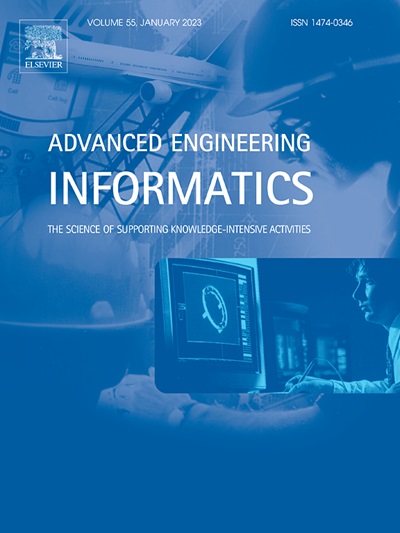基于 BIM 的动态危险自动分析,利用 CCTV 数据在土方工程施工阶段采取主动安全措施
IF 9.9
1区 工程技术
Q1 COMPUTER SCIENCE, ARTIFICIAL INTELLIGENCE
引用次数: 0
摘要
目前土方施工阶段的安全管理,往往未能预见到施工现场的动态性,缺乏主动措施,导致事故频发。为了应对这些挑战,本文提出了一个系统,通过识别由重型设备活动引起的邻近危险区,以及在BIM框架内工人暴露于这些危险的区域,来防止建筑工地的动态危险。该系统采用基于计算机视觉的闭路电视方法进行连续监控,以获取现场的重要信息。然后将获得的信息进行处理并集成到BIM模型中,根据风险估计结果可视化危险区域。一个案例研究强调了该系统在BIM模型中生成最新危险地图的能力,以及综合危险分析结果。拟议的系统为安全管理人员提供了有关动态危险区的宝贵见解,以改进现场规划并减少事故发生的可能性。本文章由计算机程序翻译,如有差异,请以英文原文为准。
BIM-based automated analysis of dynamic hazards for proactive safety measures during the earthwork construction stage using CCTV data
Current safety management during the earthwork construction stage often fail to anticipate the dynamic nature of construction sites, leading to frequent accidents due to a lack of proactive measures. To address these challenges, this paper presents a system to prevent dynamic hazards on construction sites by identifying proximity hazard zones caused by heavy equipment activity, as well as areas where workers are exposed to these hazards, within a BIM framework. This system uses a computer vision-based CCTV approach for continuous monitoring to obtain important information within the site. The obtained information is then processed and integrated into a BIM model to visualize the hazard zones according to the risk estimation results. A case study highlights the system’s ability to generate up-to-date hazard maps within the BIM model, along with integrated hazard analysis results. The proposed system provides valuable insights for safety managers regarding dynamic hazard zones to improve site planning and reduce the likelihood of accidents.
求助全文
通过发布文献求助,成功后即可免费获取论文全文。
去求助
来源期刊

Advanced Engineering Informatics
工程技术-工程:综合
CiteScore
12.40
自引率
18.20%
发文量
292
审稿时长
45 days
期刊介绍:
Advanced Engineering Informatics is an international Journal that solicits research papers with an emphasis on 'knowledge' and 'engineering applications'. The Journal seeks original papers that report progress in applying methods of engineering informatics. These papers should have engineering relevance and help provide a scientific base for more reliable, spontaneous, and creative engineering decision-making. Additionally, papers should demonstrate the science of supporting knowledge-intensive engineering tasks and validate the generality, power, and scalability of new methods through rigorous evaluation, preferably both qualitatively and quantitatively. Abstracting and indexing for Advanced Engineering Informatics include Science Citation Index Expanded, Scopus and INSPEC.
 求助内容:
求助内容: 应助结果提醒方式:
应助结果提醒方式:


